Top Rankings
Whitewater Unified School District ranks among the top 20% of public school district in Wisconsin for:
Category
Attribute
Diversity
Most diverse schools (Top 1%)
For the 2025 school year, there is 1 public middle school serving 431 students in Whitewater Unified School District. This district's average middle testing ranking is 3/10, which is in the bottom 50% of public middle schools in Wisconsin.
Public Middle School in Whitewater Unified School District have an average math proficiency score of 24% (versus the Wisconsin public middle school average of 34%), and reading proficiency score of 28% (versus the 36% statewide average).
Minority enrollment is 43% of the student body (majority Hispanic), which is more than the Wisconsin public middle school average of 39% (majority Hispanic and Black).
Overview
This School District
This State (WI)
# Schools
6 Schools
729 Schools
# Students
1,939 Students
248,238 Students
# Teachers
160 Teachers
17,959 Teachers
Student : Teacher Ratio
12:1
12:1
District Rank
Whitewater Unified School District, which is ranked within the bottom 50% of all 444 school districts in Wisconsin (based off of combined math and reading proficiency testing data) for the 2021-2022 school year.
The school district's graduation rate of 90-94% has increased from 85-89% over five school years.
Overall District Rank
#360 out of 450 school districts
(Bottom 50%)
(Bottom 50%)

Math Test Scores (% Proficient)
27%
39%
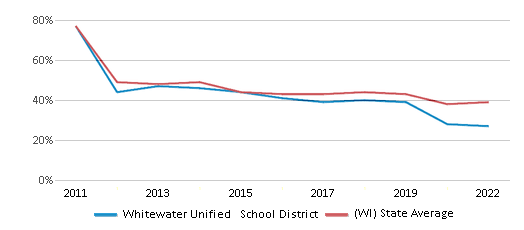
Reading/Language Arts Test Scores (% Proficient)
31%
38%
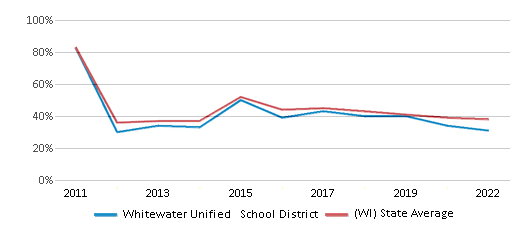
Science Test Scores (% Proficient)
40%
44%
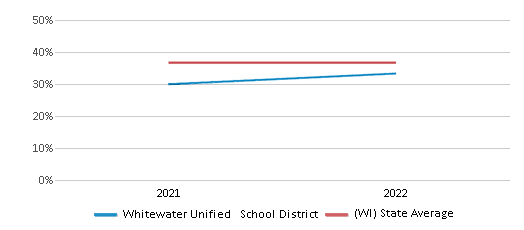
Graduation Rate
90-94%
90%
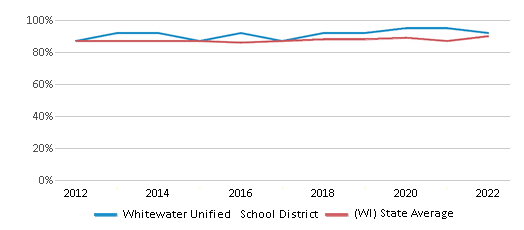
Students by Ethnicity:
Diversity Score
0.57
0.59
# American Indian Students
4 Students
3,614 Students
% American Indian Students
n/a
2%
# Asian Students
23 Students
11,285 Students
% Asian Students
1%
5%
# Hispanic Students
729 Students
37,753 Students
% Hispanic Students
38%
15%
# Black Students
54 Students
30,293 Students
% Black Students
3%
12%
# White Students
1,045 Students
152,522 Students
% White Students
54%
61%
# Hawaiian Students
1 Student
174 Students
% Hawaiian Students
n/a
n/a
# Two or more races Students
83 Students
12,537 Students
% of Two or more races Students
4%
5%
Students by Grade:
# Students in PK Grade:
101
6,117
# Students in K Grade:
122
6,551
# Students in 1st Grade:
134
6,827
# Students in 2nd Grade:
141
7,080
# Students in 3rd Grade:
135
7,007
# Students in 4th Grade:
152
8,146
# Students in 5th Grade:
128
14,725
# Students in 6th Grade:
135
48,528
# Students in 7th Grade:
139
57,406
# Students in 8th Grade:
157
59,497
# Students in 9th Grade:
160
7,426
# Students in 10th Grade:
158
5,915
# Students in 11th Grade:
134
6,276
# Students in 12th Grade:
143
6,737
# Ungraded Students:
-
-
District Revenue and Spending
The revenue/student of $18,240 is higher than the state median of $17,039. The school district revenue/student has declined by 6% over four school years.
The school district's spending/student of $16,406 is less than the state median of $17,011. The school district spending/student has declined by 6% over four school years.
Total Revenue
$35 MM
$13,869 MM
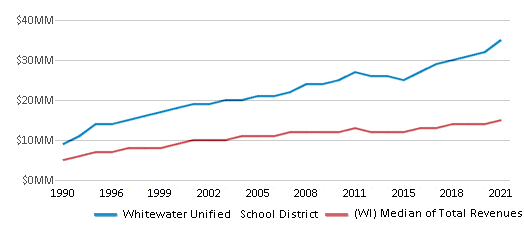
Spending
$32 MM
$13,846 MM
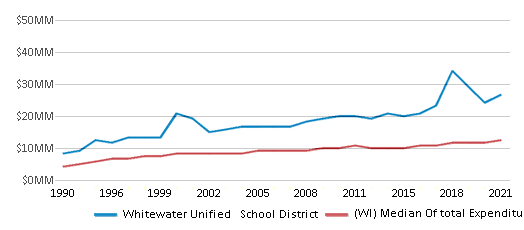
Revenue / Student
$18,240
$17,039
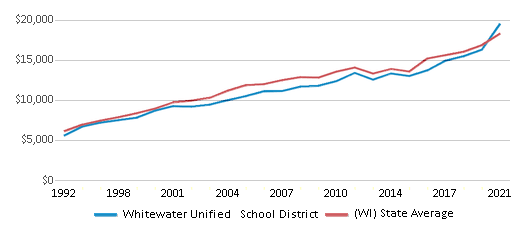
Spending / Student
$16,406
$17,011
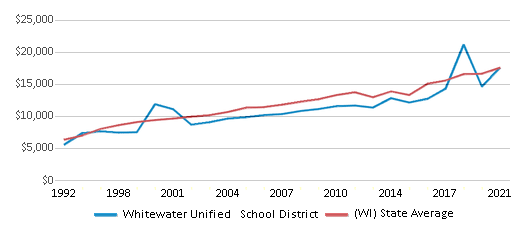
Best Whitewater Unified School District Public Middle Schools (2025)
School
(Math and Reading Proficiency)
(Math and Reading Proficiency)
Location
Grades
Students
Rank: #11.
Whitewater Middle School
(Math: 24% | Reading: 28%)
Rank:
Rank:
3/
Bottom 50%10
401 S Elizabeth St
Whitewater, WI 53190
(262) 472-8300
Whitewater, WI 53190
(262) 472-8300
Grades: 6-8
| 431 students
Recent Articles

What Is A Charter School?
Explore the world of charter schools in this comprehensive guide. Learn about their history, how they operate, and the pros and cons of this educational innovation. Discover key facts about charter schools, including admission policies, demographics, and funding, as well as what to look for when considering a charter school for your child.

10 Reasons Why High School Sports Benefit Students
Discover the 10 compelling reasons why high school sports are beneficial for students. This comprehensive article explores how athletics enhance academic performance, foster personal growth, and develop crucial life skills. From improved fitness and time management to leadership development and community representation, learn why participating in high school sports can be a game-changer for students' overall success and well-being.

February 05, 2025
Understanding the U.S. Department of Education: Structure, Impact, and EvolutionWe explore how the Department of Education shapes American education, from its cabinet-level leadership to its impact on millions of students, written for general audiences seeking clarity on this vital institution.





